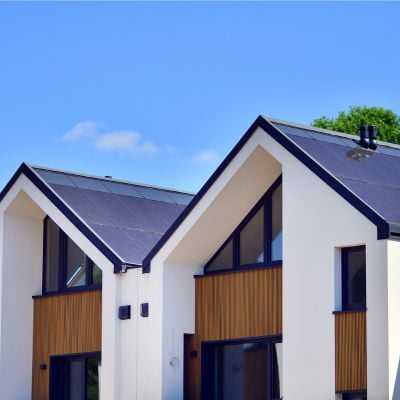What’s so super about SuperAdobe
During the Eaton fire, Snortland watched her home burn on TV. Now she’s ready to rebuild — literally using the dirt on her property.
It’s why she came to an open house by CalEarth, a nonprofit founded by an Iranian architect who developed SuperAdobe based on traditional adobe architecture from his home in Iran.
Bridget Butler, executive director of the CalEarth Institute, told KCAL News that every CalEarth open house has been sold out since the fires. During the open house, they showcase the dome-shaped rooms, which she said are harder to shake, burn or wash away.
“The arch shape is the strongest shape in nature,” said Butler. “Instead of working against nature, it’s trying to beat nature at its own game.”
According to the website, the long coils of sandbags provide compression (vertical) strength and the barbed wire adds tensile (horizontal) strength.
If you’re so inclined, you could even build the house yourself and save on labor costs. SuperAdobe rolls start at $445 for 250 yards. They are sold in conjunction with CalEarth’s training courses.
A SuperAdobe home can last several years, according to CalEarth, but to make them permanent you’ll need to plaster over the sandbag structure to protect it from erosion.
It's unclear how having such a home would affect your home insurance policy.
Invest in real estate without the headache of being a landlord
Imagine owning a portfolio of thousands of well-managed single family rentals or a collection of cutting-edge industrial warehouses. You can now gain access to a $1B portfolio of income-producing real estate assets designed to deliver long-term growth from the comforts of your couch.
The best part? You don’t have to be a millionaire and can start investing in minutes.
Learn MoreThe movement towards safer homes
The concept of earthen homes has been around for thousands of years. Indigenous communities in what is now New Mexico and Colorado, for example, have used adobe for centuries, keeping their homes cool in summer and warm in winter.
In the aftermath of the L.A. wildfires, advocates for natural building techniques argue that materials like adobe and cob (which use sand, clay and straw) not only offer fire-resistance, but are also more environmentally friendly — reducing toxic hazards associated with more modern building materials.
Asbestos, for example, was more recently used for its fire-retardant properties, but exposure can create health issues, such as an increased risk of developing lung disease.
This shift reflects a growing awareness of the need for resilient and environmentally friendly construction practices in fire-prone regions.
Not everyone is going to build an earthen home, but it’s possible to retrofit a home to reduce vulnerability to wildfire — and some of those measures are affordable. In a paper by Headwaters Economics on retrofitting a home for wildfire resistance, the authors say that costs can range anywhere from $2,000 for minimal retrofits to more than $100,000 (for a typical 2,000-square-foot home in California).
Some of these measures include replacing exterior vents with flame- and ember-resistant vents, installing metal gutter guards and replacing bark mulch with gravel, according to the paper.
California’s Safer from Wildfires initiative lists steps you can take to qualify for an insurance discount.
This 2 minute move could knock $500/year off your car insurance in 2025
OfficialCarInsurance.com lets you compare quotes from trusted brands, such as Progressive, Allstate and GEICO to make sure you're getting the best deal.
You can switch to a more affordable auto insurance option in 2 minutes by providing some information about yourself and your vehicle and choosing from their tailor-made results. Find offers as low as $29 a month.







